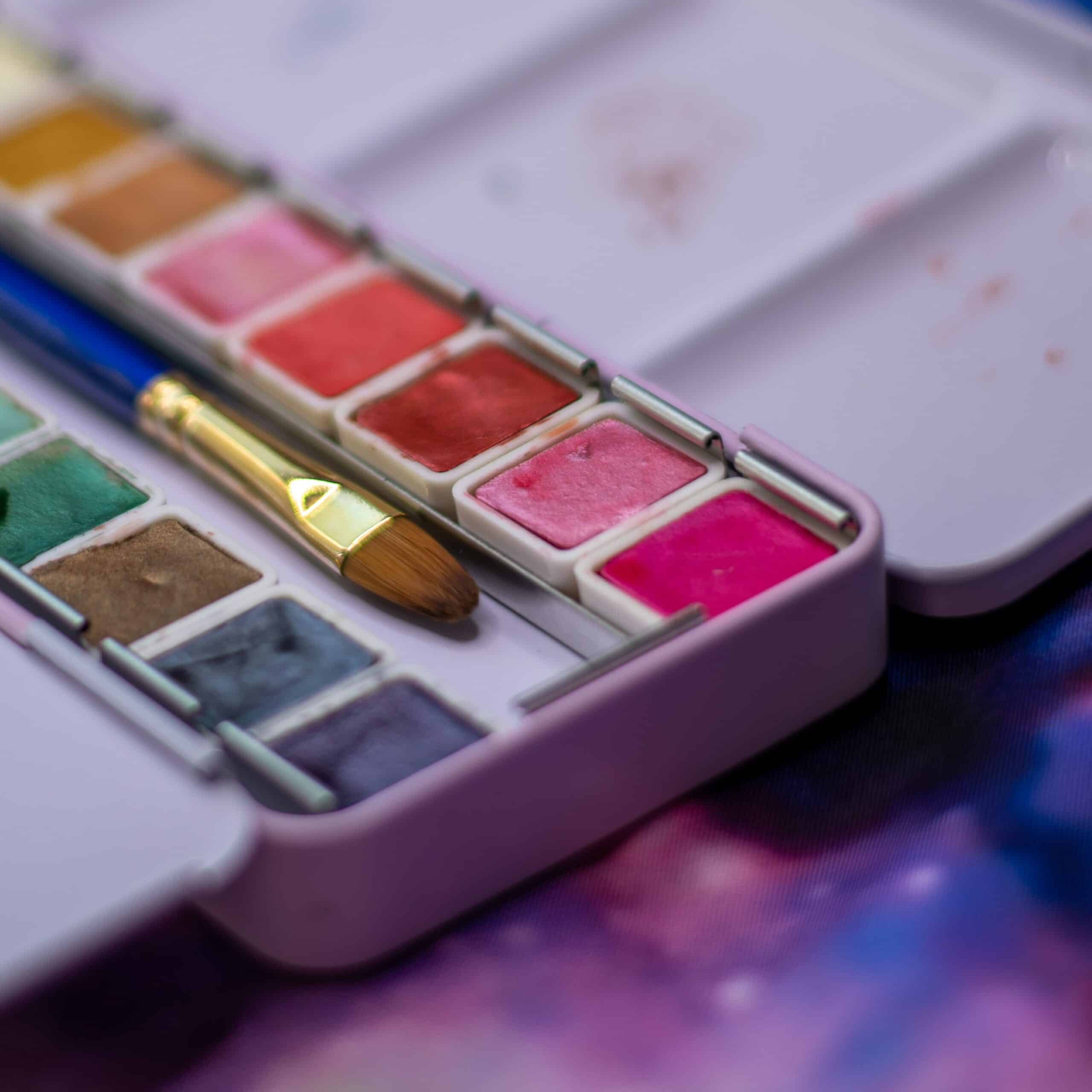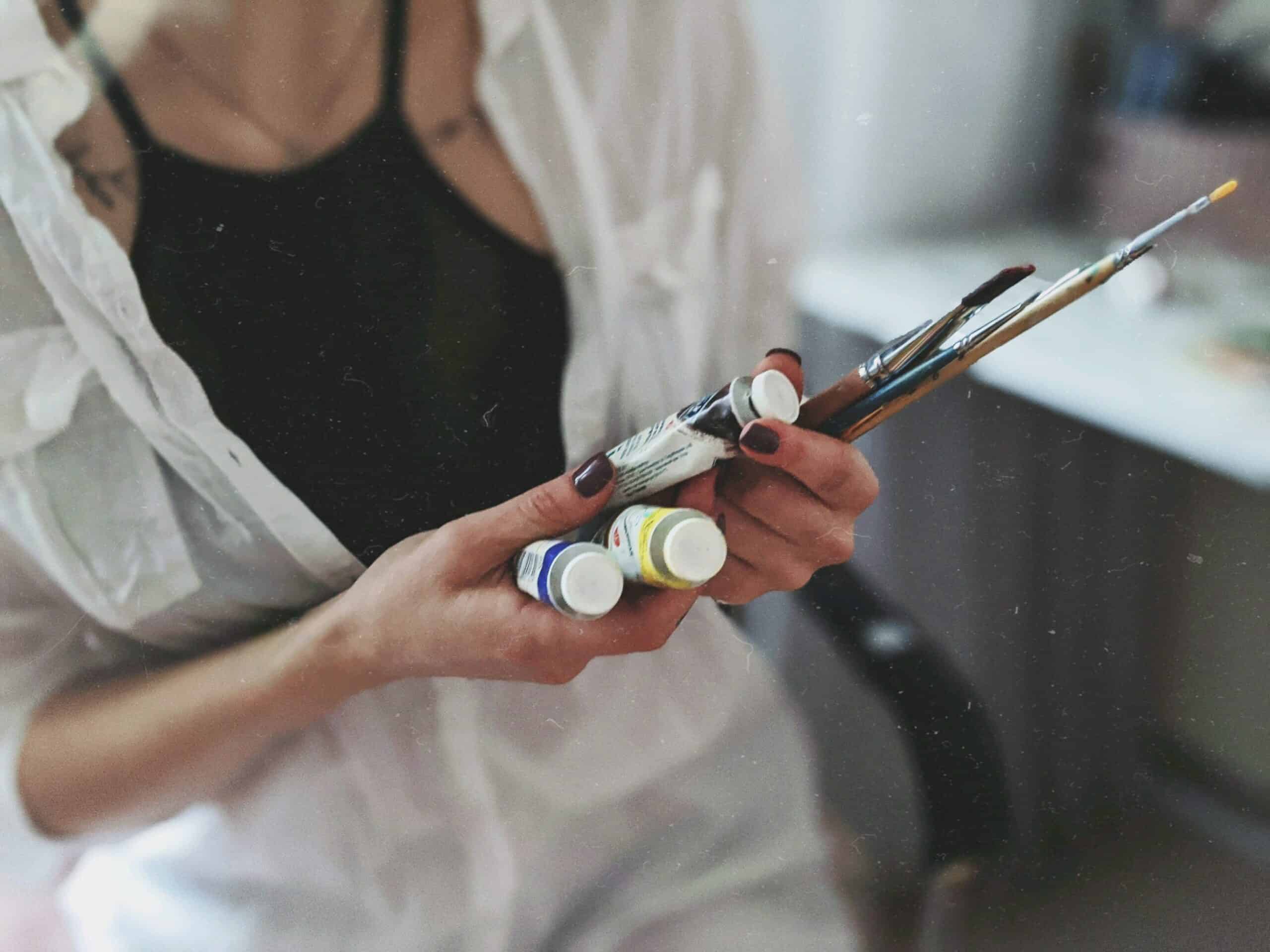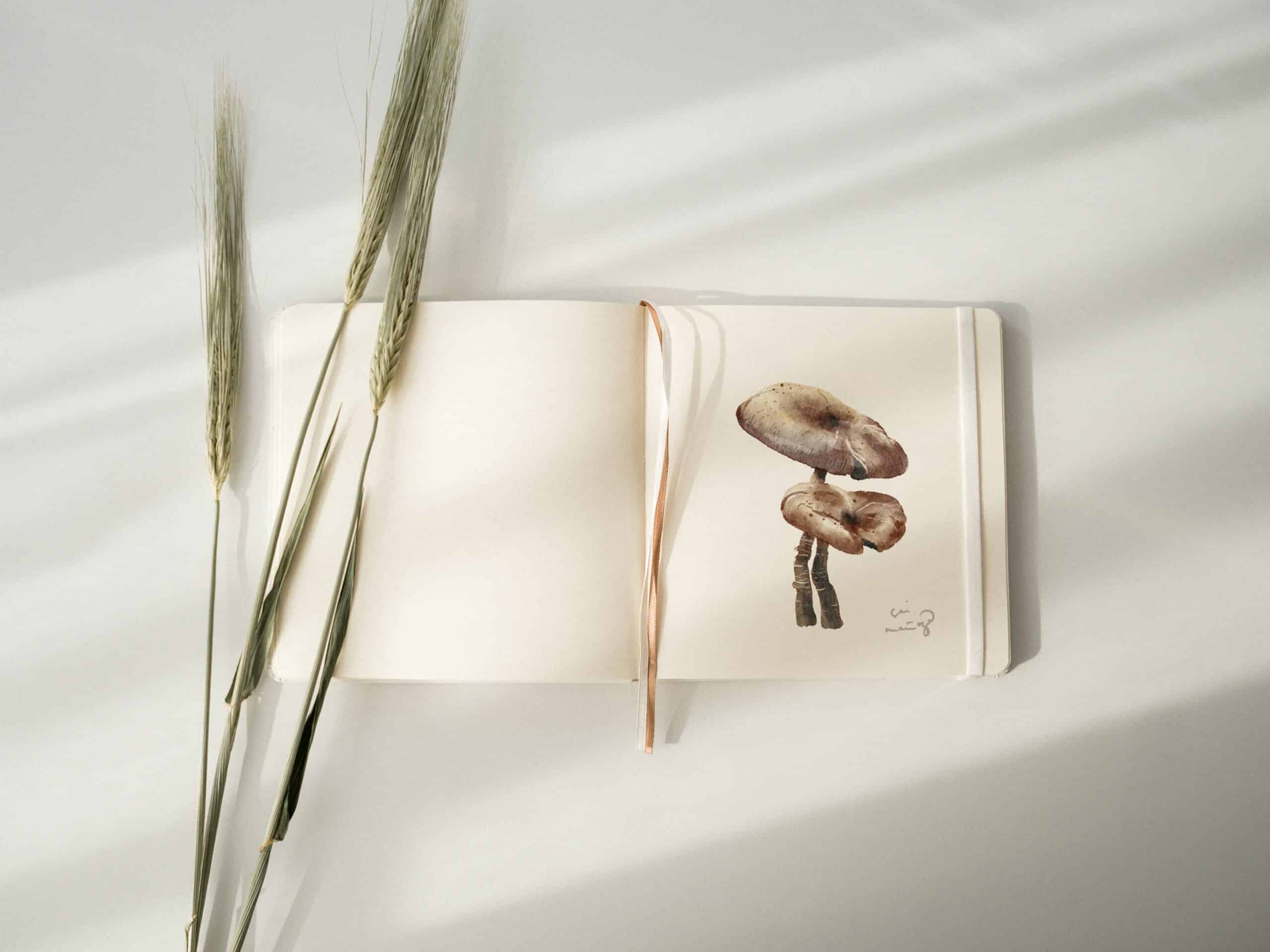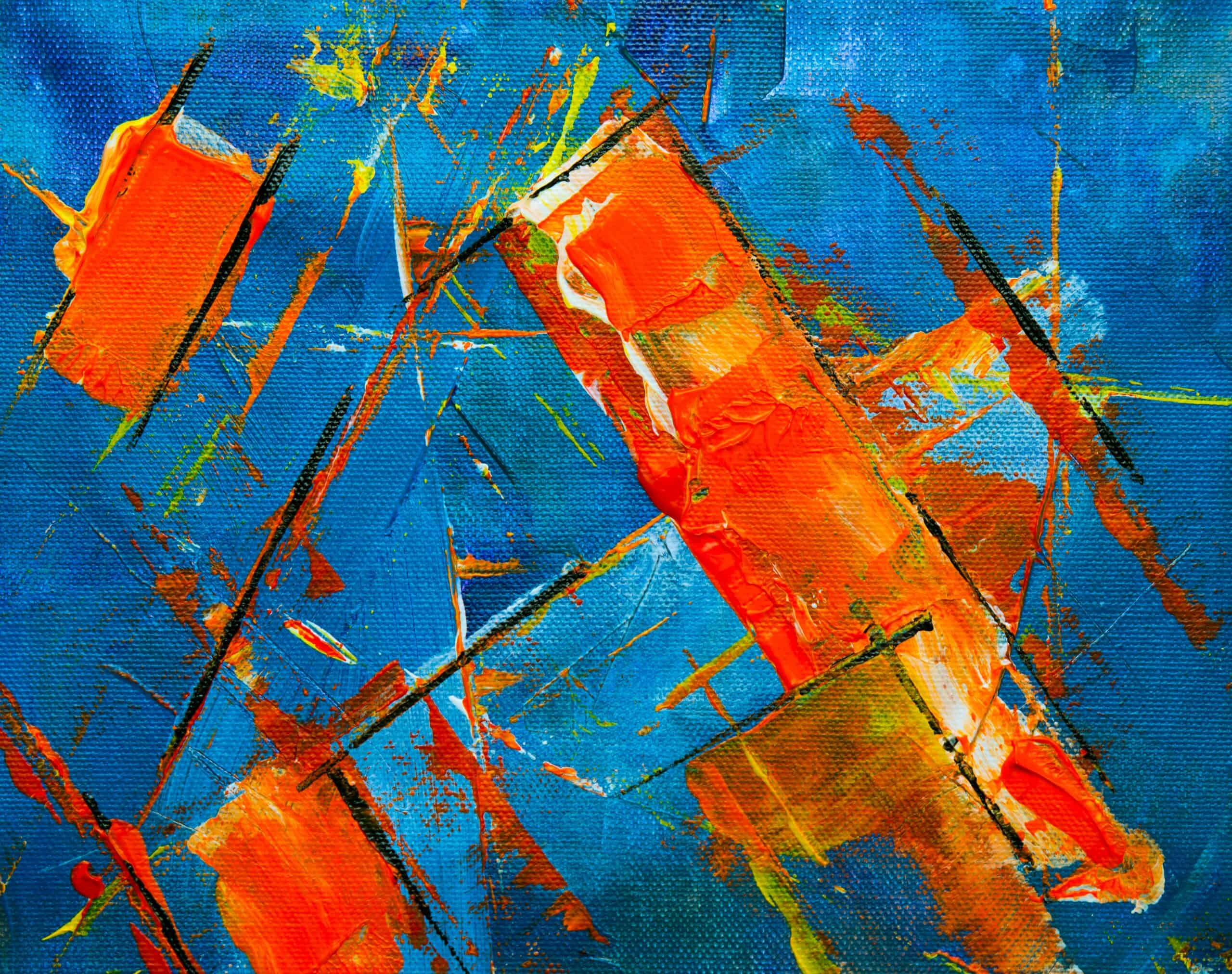Mastering the Medium: Tips and Tricks for Using Watercolor and Oil Paint
As an art critic and historian, I have long been intrigued by the debate between watercolor painting and oil painting. For centuries, artists have used a variety of mediums to create their works, but few debates are as heated or longstanding as this one. In this article, I will explore both sides of the argument to provide a comprehensive overview of each medium’s advantages and disadvantages.
The first thing that needs to be discussed is what sets these two forms of painting apart from one another. Watercolors use thin washes of color which allow for more subtle tonal changes than other media like oils or acrylics; they also dry quickly, making them ideal for sketches and quick studies. Oil paints on the other hand tend to require longer drying times due to their thicker consistency, however, they can produce incredibly vivid colors with rich textures when applied correctly.
Having considered the differences between watercolor and oil paintings it’s now time to take a deeper look into how these two styles compare in terms of artistic potential and practicality. This article aims to answer questions such as: What effect does each technique have on image quality? How easy are they to transport? And ultimately – which is better for creating beautiful artwork?
Definition Of Watercolor Painting
Watercolor painting has been around for centuries, with evidence of the art form being seen as far back as the 14th century. Today, it remains one of the most popular mediums in visual arts due to its versatility and affordability; indeed, 75% of professional artists use watercolors at least once a month. As an art form that requires skillful application of watercolor supplies (paints, brushes, paper), understanding proper techniques is key to creating beautiful pieces.
When it comes to pros and cons, watercolor painting offers several advantages over other mediums:
- Colors remain true on the page without changing shades or hues
- There is no need for toxic solvents like turpentine or linseed oil
- Colors can be layered on top of each other to create unique effects.
On the downside, however, mistakes cannot easily be corrected since layers are transparent – so if you make a mistake you may have to start again from scratch! Additionally, because the paint dries quickly when applied thinly onto paper or board surfaces, some might feel rushed while working with this medium.
In summary, then, watercolor painting provides an exciting challenge for any artist looking to explore different color palettes and textures – but also requires patience and practice to gain mastery over this versatile yet unforgiving medium. Now let us turn our attention toward exploring what oil painting has to offer.

Definition Of Oil Painting
Whereas watercolor painting involves the use of semi-transparent pigments that are mixed with a binder to create thin washes, oil painting is a medium in which opaque paints made from pigment particles suspended in drying oils – such as linseed oil or walnut oil – are applied directly onto the canvas. Oil paints have been around for centuries and are one of the oldest forms of fine art media. With its longer working time, greater range of colors and textures, and rich velvety finish when dry, oil painting has become an incredibly popular form of artistic expression.
Oil painters can choose from a variety of different supplies including canvases, brushes, pencils, erasers, and other drawing tools; however, it is primarily the paints themselves that define the oil painting technique. When selecting paints there is an array of options available ranging from traditional lead whites to modern synthetic colors like fluorescent pinks and metallic greens. In addition to this wide selection of choices, many different grades or qualities vary by price depending on how densely packed their pigment particles are thus affecting the intensity and vibrancy of their hues.
The history of oil painting dates back hundreds of years ago when artists first used walnut and poppy seed oils combined with powdered earth pigments to produce works that had never before been seen in terms of color saturation and luminosity. Over time this method evolved into what we recognize today as classical oil painting techniques involving layering paint over successive coats until desired results were achieved. As technology advanced so did the materials used allowing more vibrant colors than ever before while creating new possibilities for contemporary styles within this age-old medium.

Materials And Supplies For Watercolor Painting
When it comes to watercolor painting, materials, and supplies are of the utmost importance. Here is a list of what one needs to get started:
- Watercolor Brushes - These come in all shapes and sizes, however, a good starting point would be to choose two rounded brushes - one small and one large - that hold their shape well when wet.
- Watercolor Paper - There are many types available on the market today, but artists should look out for papers that have been treated with sizing which helps prevent colors from bleeding into each other. Selecting acid-free paper is also highly recommended as this ensures your artwork lasts longer without fading over time.
- Watercolor Paints - A good selection of paints is essential for any watercolor project; they can range from vibrant hues such as cerulean blue or cadmium yellow to more subtle tones like burnt sienna or lemon yellow. Many brands offer sets specifically made for beginners, so check those out before making any purchases!
- Watercolor Palette - This is used to mix colors and lay them out neatly onto your canvas surface; some palettes even feature built-in wells where leftover paint can be stored until needed again later on during your painting session! A basic set usually consists of at least six round containers with lids and a larger flat area suitable for mixing up different shades quickly and efficiently.
Everything from the type of brushes you use for your paintings, to the size and quality of the paper will affect the outcome of your artwork. Creating a successful watercolor painting requires an artist familiar with these tools.
Watercolors require careful handling due to their delicate nature – but once you’ve got the hang of it, then nothing can stop you from creating beautiful artwork! With these four items in hand, you’re now ready to begin exploring the world of watercolors…next step? Gathering materials and supplies for oil painting!
Materials And Supplies For Oil Painting
When it comes to oil painting, the materials, and supplies required are just as important as the technique. To achieve a successful outcome, an artist must be well-supplied with the right tools for the job. The following table outlines key items necessary for any serious oil painter.
item | purpose |
|---|---|
Oil Paint | Pigment used to create artwork on canvas or board. Can come in tubes, pans, or jars. |
Paint Brushes | A tool made up of bristles and a handle used to apply paint onto the surface. Various sizes are available. |
Canvas Boards | A lightweight alternative to stretched canvases that provide a sturdy base for painting upon. |
Painting Boards | Sturdy boards which can take medium-heavy weight paints without warping over time. |
Oil Palette | Shallower than watercolor palettes; are often chosen by experienced painters due to their versatility and stain resistance. |
Oil painters should familiarize themselves with the range of materials available so they can make informed decisions about their work before beginning a project.
When selecting art supplies, quality products must be chosen so that your paintings will last over time while retaining vibrant colors and sharp detail when needed. It's also imperative to ensure you have enough of each item on hand before starting a new piece - running out halfway through could cause unnecessary frustration!
With these considerations taken into account, one is then ready to proceed with techniques specific to this type of painting media.
Technique Differences Between Watercolor And Oil Painting
Oil painting and watercolor painting have been around for centuries, but each has its own unique set of techniques. It is interesting to note that while oil paintings were the most popular art form in Europe from the 1400s through the 1800s, watercolors began gaining popularity from the 1700s onward. Here are some key differences between these two mediums:
Watercolor Technique:
- Involves wet-on-wet blending techniques
- Requires a light touch when applying pigment
- Can be used on paper or stretched canvas
- Needed supplies include paintbrushes, paints, palette knives, and supports like paper or board
Oil Painting Technique:
- Uses multiple layers to build up colors and textures
- Pigment must be blended with solvents before being applied
- Usually painted on primed panels or canvases
- Necessary materials include brushes, oils, rags/paper towels, varnish, and solvent
While both types of painting use color pigments mixed with other materials such as linseed oil (in the case of oils) or gum Arabic (for watercolors), they require vastly different approaches. With oil painting you can blend colors on top of one another as much as needed until you achieve the effect you desire; this isn't possible with watercolor since it dries quickly. On the other hand, with watercolor, you can create beautiful translucent effects that cannot easily be achieved with oil paints. All in all, there are pros and cons to either type of technique depending upon what your goal is for the final artwork. While each requires very different sets of supplies and techniques, ultimately it’s up to individual preferences which one will succeed best in achieving desired results. Now let's discuss further how understanding the pros and cons between these two styles of painting may help guide your decision-making process when selecting which medium to work with for a particular project.

Pros And Cons Of Watercolor Vs Oil Painting
Watercolor and oil painting are two of the most popular media used by artists. Both have their own unique set of pros and cons, making it important to weigh each carefully when deciding which one is right for you.
When it comes to watercolors, the main pro is that they can create soft, dreamy effects. Watercolor paints also tend to be more affordable than oils and require less time in terms of drying time. Furthermore, watercolors allow for a great deal of experimentation due to their transparency and unpredictability. However, there are some drawbacks associated with this medium such as difficulty in achieving certain textures or blending colors on wet paper. Its unpredictable nature can also make it difficult to control when attempting larger works.
The primary benefit of oil paint is that it allows for greater detail and flexibility compared to watercolor. Oils dry slowly allowing ample time for revisions; plus, you can achieve richer hues with higher levels of saturation due to its opacity. Additionally, because oils are thicker than watercolors they’re better suited to creating textured surfaces like those found in landscapes or still-life paintings. On the downside, however, oils take far longer to dry - sometimes up to several weeks - which requires patience from the artist! They're also messier than other types of paints and require special solvents for cleaning brushes afterward.
In comparing both mediums side-by-side, it’s easy enough tell see why many artists prefer one over the other depending on what kind of results they want out of their artwork. It's clear that no single material has a definitive advantage over its counterpart; instead, it all boils down to personal preference and skill level.

Recommended Learning Resources
It's no secret that when it comes to learning the art of either watercolor painting or an oil painting, there are endless resources available on the internet. From tutorials and classes to books and magazines - anyone with an interest in this type of art can find a helpful way to learn. But what is better for mastering these two mediums? Well, I'm here to say that they both have their merits!
When it comes to learning watercolors, you'll be hard-pressed not to find some great options online. With so many free watercolor tutorials and even paid watercolor classes available, you can easily get up to speed quickly with your skillset. The vibrant colors used in this style lend themselves well to creating beautiful works of art in just about any setting. You could also turn towards more traditional methods such as purchasing a book specifically on how to paint with watercolors.
The oil painting has its benefits too! There are plenty of oil painting tutorials out there on the web which will give you all the tips and tricks necessary for executing complex pieces of artwork with ease. Additionally, there are lots of oil painting classes available offering personalized instruction from experienced artists who have been working in this field for years. And don't forget about those classic textbooks written by expert painters if you're looking for further guidance!
Overall, whether you choose watercolor or oil painting (or maybe even both!) depends entirely on your personal preference and comfort level with each style. Each one offers unique opportunities which make them both worth exploring – so why not try them out yourself?
Frequently Asked Questions
Mixing colors in watercolor painting is an art form all its own! It can be daunting to try and combine the techniques of both oil and watercolor painting, but luckily there are some special techniques for doing just that. To create a stunning piece of artwork with these two mediums, here are a few tips:
- Use masking fluid when working with oils so as not to overwhelm your delicate watercolors.
- Experiment with different brands of paint to get the desired effect.
- Don’t forget about white; it’s essential for creating lighter tones and highlights.
- Practice layering layers of transparent colors over each other for richer hues.
As an artist, this challenge requires you to think outside the box to achieve the best results. You’ll need to take into consideration how various elements like texture, light, color temperature, and opacity will interact or clash depending on which materials you choose. Furthermore, understanding the unique properties of both oil paints and watercolors is key to success – while they may appear similar at first glance, they require vastly different approaches when mixing colors. For example, oil paint is more forgiving than watercolor because it allows greater control over blending and transitioning between shades whereas watercolor needs to be handled delicately due to its thin consistency.
When combining the two media, step back often during your process to assess the overall composition from a distance before making any drastic changes. Appreciate the natural beauty of their differences instead of attempting to make one look like another – remember that experimentation is encouraged when mixing colors in either technique! By keeping an unbiased eye on both styles of painting, you’ll create something truly unique that captures the essence of both worlds perfectly.
Mixing watercolor and oil painting techniques is an innovative approach to art. It allows artists to combine the distinct properties of both media, creating a unique piece that captures elements from each style. As such, this hybrid method has become increasingly popular in recent years.
Watercolors are known for their vibrancy and transparency, while oils provide depth and texture. Oil-watercolor blending can bring these two qualities together, allowing for a range of creative possibilities:
- Color layering effects can be achieved by combining transparent washes with thicker oil paints
- Thin layers of paint applied with an airbrush or dropper create dynamic surface textures
- Glazing techniques enable light refraction off the canvas
- Finer details can be added using more precise brush strokes.
The mixing of oil and watercolor techniques also opens up interesting opportunities for experimentation. Exploring different materials, tools, and approaches to mark-making, enables artists to develop new ways of expressing themselves through art. In addition to providing aesthetic benefits, this type of work can open up unexpected avenues of exploration which may lead to further artistic growth.
This kind of exploration often yields stunning results thanks to the rich color palette available when working with both types of mediums. The combination creates a unique visual experience – one that cannot be replicated with either technique alone. This makes the mixture between watercolor and oil painting a powerful tool for any artist who wants to push boundaries within their practice.
The question of whether watercolor paints can be used on canvas is an interesting one, particularly for those who have experience in either form of painting. In this article, I will explore the possibility of using watercolor paints on canvas and examine their potential as a medium for creating artwork.
To use watercolor paints on canvas successfully, certain considerations must first be taken into account. Canvas itself is a very absorbent material and thus requires special treatment if it is to accept paint without becoming overly saturated or damaged by the process. This means that before attempting any kind of watercolor painting on canvas, it is important to ensure that the surface has been properly prepared with gesso or other primers designed specifically for this purpose. Additionally, when selecting which type of brushes and pigments to use, care should be taken to choose the ones that are suitable for working on such a substrate.
Despite these challenges, many artists still find great success when they attempt to create works of art using watercolors on canvas; indeed, some notable examples exist within the history of western art. The work of Dutch painter Jan van Kessel Sr., for example, was heavily influenced by his experiments with applying transparent layers of pigment directly onto primed canvases to achieve luminous effects not possible with more traditional oil techniques. Similarly, many contemporary painters exploring abstraction often employ various forms of mixed media – including both acrylics and liquid watercolors applied onto surfaces ranging from paper to raw linen – to render their unique visions into tangible objects.
It is clear then that while there may be difficulties associated with using watercolor paints on canvas due to their inherent absorbency levels, these issues can easily be overcome through proper preparation and selection of materials. As long as the artist takes steps and necessary precautions beforehand and selects appropriate tools for the task at hand, beautiful results can certainly be achieved by combining this versatile style with a sturdy platform like canvas.
When it comes to the difficulty level of watercolor and oil painting, opinions vary. From mixing colors to applying various techniques, both mediums require a certain degree of skill that can only be developed with practice. But what are their key differences? Here is a breakdown of some important points.
- Watercolor paints typically dry much faster than oil paints which can make for more spontaneous brush strokes but can also come off as challenging when attempting to blend or mix colors.
- Oil painting requires time dedicated to layering and blending paint on the canvas to achieve an even finish – this could be considered one of its most difficult aspects.
- On the other hand, watercolor usually has less texture since there’s no need to apply multiple layers; instead, you’re able to create sharp lines and striking color combinations without any trouble at all!
Ultimately, whether you choose watercolors or oils depends entirely upon your personal preference and skill set. While both media have their respective advantages and challenges, they each offer unique opportunities for creative expression. For those looking for something more immediate yet still intricate in detail, watercolor may be the best option – however, if patience and control over layers are more appealing then oil will likely suit you better. As far as overall difficulty goes, neither should be taken lightly – experienced painters from either field agree that mastering these two art forms takes dedication and plenty of trial-and-error experimentation before real progress can be made!
Choosing between watercolor and oil painting can be difficult, especially for those just beginning their artistic journey. It’s important to understand the differences in materials, techniques, and results of each medium before deciding which one is best for you. In this article, I will provide an overview of both watercolor painting techniques and oil painting techniques so that readers can make a more informed decision when choosing a painting medium.
Watercolor paints are made from pigments suspended in a binder typically composed of gum Arabic or hide glue mixed with water; they are applied to paper after being diluted with additional water. Watercolors allow painters to create delicate washes as well as vivid color gradients; however, it’s easy to accidentally oversaturate the paper if too much paint or water is used on one area at once. Additionally, since the colors blend easily on the page, covering up mistakes may prove challenging.
Oil paints consist of pigment particles suspended in drying oils such as linseed oil or walnut oil; they take longer than watercolors to dry and often require several layers of paint to produce bolder effects. On top of allowing for greater precision due to thicker consistency, oil paints also remain malleable until completely dry, unlike other types of paint. This means that artists have greater flexibility when reworking certain areas without fear of ruining the entire piece – something not possible with quicker-drying media like watercolors.
The choice between these two options ultimately boils down to personal preference: do you prefer quick results (watercolor) or slower but lasting ones (oil)? Do you value delicacy over durability? Are you interested in building subtle gradations or achieving opaque coverage? Understanding your own needs and goals can help guide your decision-making process when selecting a painting medium.
Conclusion
As an artist and critic, I have often pondered the differences between watercolor and oil painting. After much deliberation, I can confidently say that there is no definitive answer to which technique is best for any given project. Both techniques have unique advantages and disadvantages, and both require a great deal of skill from the artist in terms of color mixing, layering, etc. However, it is interesting to note that many art historians believe that watercolor painting requires more technical skill than oil painting due to its transparent nature. This allows artists to create incredibly detailed works with a variety of textures and effects.
In addition, while it is possible to mix watercolor and oil paints on canvas or paper, this should be done with caution as the two mediums do not always blend well together. It also requires special knowledge of how each type of paint interacts with the other when mixed- something few novice painters are aware of.
Ultimately, the decision of whether or not to use watercolors or oils comes down to personal preference as both styles offer their own unique sets of benefits and drawbacks. Regardless of which you choose, however, it's important to remember that practice makes perfect- even if you only spend 15 minutes per day working on your craft! For instance, according to recent studies by The Smithsonian Institute; those who dedicated at least 15 minutes daily improved their skills by over 70% within 12 months! With hard work and dedication, anyone can become an amazing painter regardless of which media they prefer.






